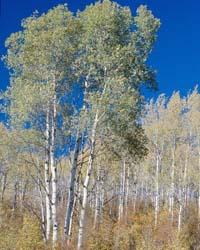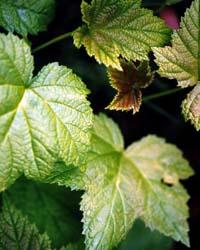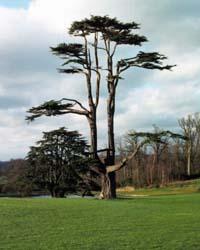Trees do not grow disproportionately
2006/05/21 Lasa Oiarbide, Aitzol - Elhuyar Zientziaren Komunikazioa

The importance of the environment in tree growth is evident. In fact, the tree does not grow the same in dry or wet media. It will not reach the same height if it has soil suitable to take root or has grown in a rocky escarpment. Light also influences because it is the energy source that the tree uses to perform photosynthesis. But then why not extend the tree that inhabits the most suitable environment? Several groups of researchers try to answer this question.
If researchers have shown interest in this issue, it has not been just scientific curiosity. Forestalists want to know how to get the most out of a tree plantation. Environmentalists, for their part, want to investigate what effects tree and forest growth can have on climate change.
Seeking causes

The hypotheses formulated to clarify why the tree ceases to grow from a moment point to a question of age. Simply, from a certain age, the tree twists and stops growing. But later they realized that this theory had neither foot nor head. In fact, trees that have stopped growing in length have a great activity, for example, when creating fruits.
Now we are working on a new hypothesis, according to which water transport problems from a certain height through the trunk are the cause of growth interruption. The first signs in favor of this argument were those of American environmentalist Michael Ryan in the 1990s. Ryan studied pores called tree leaf stomata. These pores, on the one hand, allow evaporation of water and, on the other, absorb carbon dioxide from the atmosphere.
Closed stomata

Ryan observed that the leaves of the tree cup had the stomata closed. To cope with water scarcity in the cup, the pore closes the leaves to prevent evaporation, but does not collect enough carbon dioxide for photosynthesis. Without photosynthesis, without energy and without energy, the tree cannot grow.
On the other hand, as water ascends through the tree, the cells that carry water face increasing resistance. Near the cup, the intercellular valves close a lot to cope with this resistance, reaching the cells little water. The internal pressure exerted by water is essential for the reproduction of the cell, so without hydrostatic pressure or energy from photosynthesis, the cells do not reproduce and the tree does not grow.
This discovery serves to understand the growth of certain tree species. For example, in front of perishable leaf trees, conifers have larger cells that carry water, so they acquire greater height than them. But the discovery does not serve to explain the growth of other species. For example, in flooded areas, the 25 metre long old eucalyptus grow more slowly than the younger eucalyptus of the same height and have less photosynthetic activity. Still to be investigated.
Published in 7K.




